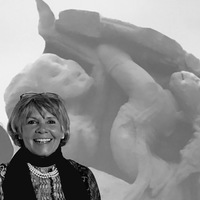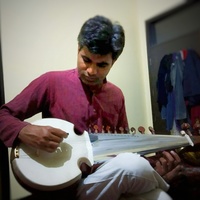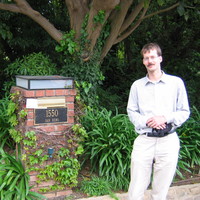
Stella Dupuis
I am a Swiss novelist born in Panama, a passionate traveler, and an avid observer of diverse cultures and ways of life. Throughout my journey, I’ve embraced a variety of roles—business manager, yoga and meditation teacher, and writer—all driven by a deep curiosity about the world and its people.
Those who know me describe me as a courageous woman unafraid to challenge societal norms in pursuit of a deeper spiritual calling. My work reflects a yearning for authentic spiritual experiences—ones that transcend blind faith, stereotypes, and religious dogma.
After retiring from the corporate world, I dedicated myself fully to writing and travel. My journey eventually led me to India, where I lived for a decade. During this time, I had the privilege of studying with a renowned linguist and collaborating on the translation of The Kaulajñānanirṇaya, an ancient Sanskrit manuscript that explores the teachings of the Yoginis—sacred feminine deities. I later translated this text into both Spanish and French.
Much of my work—novels, essays, and translations—explores themes of Tantra and the divine feminine, particularly the goddess energy in its many forms. Through my writing, I seek to share lesser-known spiritual paths that continue to inspire and guide my own journey.
My latest essay was published in a collaborative book with four close friends—Indian scholars and artists. In this work, I guide the reader through myths from around the world, focusing on death-related symbols that herald new birth and the heroic figures who embody these transitions. At its heart, "Birthing the Goddess" explores the transformative journey of awakening the goddess within—an inner rebirth that leads toward immortality.
Those who know me describe me as a courageous woman unafraid to challenge societal norms in pursuit of a deeper spiritual calling. My work reflects a yearning for authentic spiritual experiences—ones that transcend blind faith, stereotypes, and religious dogma.
After retiring from the corporate world, I dedicated myself fully to writing and travel. My journey eventually led me to India, where I lived for a decade. During this time, I had the privilege of studying with a renowned linguist and collaborating on the translation of The Kaulajñānanirṇaya, an ancient Sanskrit manuscript that explores the teachings of the Yoginis—sacred feminine deities. I later translated this text into both Spanish and French.
Much of my work—novels, essays, and translations—explores themes of Tantra and the divine feminine, particularly the goddess energy in its many forms. Through my writing, I seek to share lesser-known spiritual paths that continue to inspire and guide my own journey.
My latest essay was published in a collaborative book with four close friends—Indian scholars and artists. In this work, I guide the reader through myths from around the world, focusing on death-related symbols that herald new birth and the heroic figures who embody these transitions. At its heart, "Birthing the Goddess" explores the transformative journey of awakening the goddess within—an inner rebirth that leads toward immortality.
less
Related Authors
Terry Gunnell
University of Iceland
Armando Marques-Guedes
UNL - New University of Lisbon
Giulia Sissa
Ucla
Lorenzo Verderame
Università degli Studi "La Sapienza" di Roma
Francisco de Paula Souza de Mendonça Júnior
UFSM - Universidade Federal de Santa Maria
Andrés Menéndez-Blanco
University of Oviedo / Universidad de Oviedo
David Mañero-Lozano
University of Jaen
Pranshu Samdarshi
Nalanda University, Rajgir, India
Ana Isabel Jiménez San Cristóbal
Universidad Complutense de Madrid
Eckart Frahm
Yale University
InterestsView All (13)










Uploads
Papers by Stella Dupuis
Stella Dupuis takes us through a magnificent ride around the world looking for the birth of heroes from the stories of Amazonian woman warrior to myths evoking the search for Birthing the Goddess Within to achieve immortality
Janet’s essay in this book is only a fragment of her 25 year-long fascinating research on the traditional birthing practices across India.
Seema Kohli, the editor, navigates around the continuity of birth and death through the ideas of ‘Hiranyagarbha’ and Mārtanda. Her amazing art works and poems take the reader to the realm where Birthing the Goddess takes place.
On dit que Matsyendranātha ne s’est jamais désincarné et que son énergie est toujours vivante et se manifeste autour de tous ceux qui souhaitent écouter les enseignements des yoginīs pour atteindre l’état d’Unité.
Dans la littérature et les légendes indiennes, il existe plusieurs références aux yoginīs. Que l’on parle d’elles en tant que divinités ou en tant que femmes yoginīs, dans les deux cas, les textes décrivent des personnages puissants avec des facultés redoutables ou protectrices.
En los relatos que integran esta obra los protagonistas están convencidos de que sus palabras, emociones, gestos y experiencias son únicos hasta que intuitivamente comienzan a vislumbrar los lazos invisibles que los unen.
Los templos de yoginīs en la India son el marco desde donde las diosas toman vida, danzan en sus chacras y, a través de diálogos, trasmiten sus enseñanzas.
Durante siglos los prejuicios opacaron el delicado misticismo de las yoginīs y es sólo en los últimos años que los eruditos y buscadores se han interesado en elucidar los misterios de los templos y de los textos tántricos que expresan esta gran sabiduría.
RENATA DURAN (María Victoria Durán). Colombian writer, lawyer and traveller. She has lived much of her life in Europe.
As a diplomatic she served in Paris at the UNESCO, in Brussels at the Colombian Mission to the European Union and in Rome at the FAO. She also worked as a consultant for the International Cooperation in the European Union and at USAID. Since young age she felt a particular attraction for Asia.
She has written numerous articles and books: Muñeca Rota, Colcultura 1981; Oculta Ceremonia, EMECE 1985; Sombras Sonoras, Museo Rayo 1986; Poemas Escogidos, Colcultura 1993; Los Ojos del Agua y Relatos de Plinio El Mago, Trilce Editores 2001; Signos y Espejismos, Universidad Externado de Colombia 2007; Cuatro Mujeres Imprescindibles, Ediciones B, 2011; some of her works have been translated into French and published in the America Cahiers, Publications de la Sorbonne Nouvelle 1989; Editions La Porte 2006; Chroniques Errantes, Journal des Poètes; L’Atelier de l’Agneau, etc.
Forma parte del libro que contiene la transcripción sánscrita y la traducción al español de este antiguo manuscrito.
THE KAULAJÑĀNIRṆAYA
The Esoteric Teachings of Matsyendrapāda (Matsyendranātha)
Sadguru of the Yoginī Kaula School in the Tantra Tradition
Edited and translated by Pandit Satkari Mukhopadhyaya in collaboration with Stella Dupuis.
THE KAULAJÑĀNIRṆAYA
The Esoteric Teachings of Matsyendrapāda (Matsyendranātha)
Sadguru of the Yoginī Kaula School in the Tantra Tradition
Edited and translated by Pandit Satkari Mukhopadhyaya in collaboration with Stella Dupuis.
In this paper I would like to analyze different sources of information that we have regarding the Divine Dancing Celebration. (I am not speaking about the Indian classical dance roots, even though they may have many communalities as probably both in some contexts were seen as a religious path .) My intention is to bring forth the dynamics of the sculptural expression of rapturous dance that convey transformation and bliss like the one performed by Śiva Naṭarāja combine with the heroic and also ecstatic dances that maybe give immortality as describe in the Rig Veda when Indra is the dancer ...”the immortal dances forth his hero exploits”. During centuries in India, in sacred or profane literature as well as in visual arts, the stories have a recurrent theme that revolves around dramatic fights between heroes or heroines against obstacles depicted as demons. After a general introduction to the studies of the mātṝkās, I would like to focus on the dance imagery of groups of goddesses that were depicted during the period when all the spiritual streams were influenced by the Tantras.
El estudio de esta corriente espiritual y esotérica se desarrolla dentro de un aura de misterio. No se sabe exactamente los orígenes de los templos dedicados a diversos grupos de diosas llamadas Yoginis. Sin embargo, el antiguo texto del Kaulajñânanirnaya expresa en cada capítulo ser la esencia del conocimiento de las Yoginis.
Los templos tradicionales en la India son muy distintos a los templos de Yoginis. Aunque preciosos y fascinantes, los templos de las distintas sectas que llamamos hinduismo (los dedicados a Vishnú y sus diversos avatares, los templos a Shiva y los templos a la Devî -Durga, Kali, etc.-) el dios o la diosa tutelar están en el Sanctus Sanctorum. Estos altares son pequeños y recluidos, donde sólo el sacerdote tiene acceso. Los devotos pasan y dejan sus ofrendas de flores, frutas o dinero. Los templos no son lugares donde el devoto se detiene a dialogar con las divinidades. Los dioses y diosas dan su darshan, que es la oportunidad de ser contemplados por un corto instante. En cambio, los templos de Yoginis con sus formas geométricas, a cielo abierto, invitan al devoto a comunicar, a meditar y dialogar con el grupo de diosas. El dios Bhairava a veces está en el centro del templo o a la entrada.
Durante siglos los templos de Yoginis en la India cayeron en el olvido, pero en los últimos quince años han reconquistado fama y respeto. Artistas, bailarinas, místicos, maestros, eruditos y otros han re-imaginado posibles ritos y prácticas que hubieran podido tener lugar en estos espacios sagrados.
Lejos de la India, en las Américas construimos un templo dedicado a las energías expresadas en formas femeninas, las Yoginis.
Drafts by Stella Dupuis
(Première partie, Introduction & Orissa)
Books by Stella Dupuis
Dans ce texte, des données historiques entremêlés avec des légendes et des images serviront de cadre pour entreprendre le voyage initiatique vers les yoginīs.
Stella Dupuis takes us through a magnificent ride around the world looking for the birth of heroes from the stories of Amazonian woman warrior to myths evoking the search for Birthing the Goddess Within to achieve immortality
Janet’s essay in this book is only a fragment of her 25 year-long fascinating research on the traditional birthing practices across India.
Seema Kohli, the editor, navigates around the continuity of birth and death through the ideas of ‘Hiranyagarbha’ and Mārtanda. Her amazing art works and poems take the reader to the realm where Birthing the Goddess takes place.
On dit que Matsyendranātha ne s’est jamais désincarné et que son énergie est toujours vivante et se manifeste autour de tous ceux qui souhaitent écouter les enseignements des yoginīs pour atteindre l’état d’Unité.
Dans la littérature et les légendes indiennes, il existe plusieurs références aux yoginīs. Que l’on parle d’elles en tant que divinités ou en tant que femmes yoginīs, dans les deux cas, les textes décrivent des personnages puissants avec des facultés redoutables ou protectrices.
En los relatos que integran esta obra los protagonistas están convencidos de que sus palabras, emociones, gestos y experiencias son únicos hasta que intuitivamente comienzan a vislumbrar los lazos invisibles que los unen.
Los templos de yoginīs en la India son el marco desde donde las diosas toman vida, danzan en sus chacras y, a través de diálogos, trasmiten sus enseñanzas.
Durante siglos los prejuicios opacaron el delicado misticismo de las yoginīs y es sólo en los últimos años que los eruditos y buscadores se han interesado en elucidar los misterios de los templos y de los textos tántricos que expresan esta gran sabiduría.
RENATA DURAN (María Victoria Durán). Colombian writer, lawyer and traveller. She has lived much of her life in Europe.
As a diplomatic she served in Paris at the UNESCO, in Brussels at the Colombian Mission to the European Union and in Rome at the FAO. She also worked as a consultant for the International Cooperation in the European Union and at USAID. Since young age she felt a particular attraction for Asia.
She has written numerous articles and books: Muñeca Rota, Colcultura 1981; Oculta Ceremonia, EMECE 1985; Sombras Sonoras, Museo Rayo 1986; Poemas Escogidos, Colcultura 1993; Los Ojos del Agua y Relatos de Plinio El Mago, Trilce Editores 2001; Signos y Espejismos, Universidad Externado de Colombia 2007; Cuatro Mujeres Imprescindibles, Ediciones B, 2011; some of her works have been translated into French and published in the America Cahiers, Publications de la Sorbonne Nouvelle 1989; Editions La Porte 2006; Chroniques Errantes, Journal des Poètes; L’Atelier de l’Agneau, etc.
Forma parte del libro que contiene la transcripción sánscrita y la traducción al español de este antiguo manuscrito.
THE KAULAJÑĀNIRṆAYA
The Esoteric Teachings of Matsyendrapāda (Matsyendranātha)
Sadguru of the Yoginī Kaula School in the Tantra Tradition
Edited and translated by Pandit Satkari Mukhopadhyaya in collaboration with Stella Dupuis.
THE KAULAJÑĀNIRṆAYA
The Esoteric Teachings of Matsyendrapāda (Matsyendranātha)
Sadguru of the Yoginī Kaula School in the Tantra Tradition
Edited and translated by Pandit Satkari Mukhopadhyaya in collaboration with Stella Dupuis.
In this paper I would like to analyze different sources of information that we have regarding the Divine Dancing Celebration. (I am not speaking about the Indian classical dance roots, even though they may have many communalities as probably both in some contexts were seen as a religious path .) My intention is to bring forth the dynamics of the sculptural expression of rapturous dance that convey transformation and bliss like the one performed by Śiva Naṭarāja combine with the heroic and also ecstatic dances that maybe give immortality as describe in the Rig Veda when Indra is the dancer ...”the immortal dances forth his hero exploits”. During centuries in India, in sacred or profane literature as well as in visual arts, the stories have a recurrent theme that revolves around dramatic fights between heroes or heroines against obstacles depicted as demons. After a general introduction to the studies of the mātṝkās, I would like to focus on the dance imagery of groups of goddesses that were depicted during the period when all the spiritual streams were influenced by the Tantras.
El estudio de esta corriente espiritual y esotérica se desarrolla dentro de un aura de misterio. No se sabe exactamente los orígenes de los templos dedicados a diversos grupos de diosas llamadas Yoginis. Sin embargo, el antiguo texto del Kaulajñânanirnaya expresa en cada capítulo ser la esencia del conocimiento de las Yoginis.
Los templos tradicionales en la India son muy distintos a los templos de Yoginis. Aunque preciosos y fascinantes, los templos de las distintas sectas que llamamos hinduismo (los dedicados a Vishnú y sus diversos avatares, los templos a Shiva y los templos a la Devî -Durga, Kali, etc.-) el dios o la diosa tutelar están en el Sanctus Sanctorum. Estos altares son pequeños y recluidos, donde sólo el sacerdote tiene acceso. Los devotos pasan y dejan sus ofrendas de flores, frutas o dinero. Los templos no son lugares donde el devoto se detiene a dialogar con las divinidades. Los dioses y diosas dan su darshan, que es la oportunidad de ser contemplados por un corto instante. En cambio, los templos de Yoginis con sus formas geométricas, a cielo abierto, invitan al devoto a comunicar, a meditar y dialogar con el grupo de diosas. El dios Bhairava a veces está en el centro del templo o a la entrada.
Durante siglos los templos de Yoginis en la India cayeron en el olvido, pero en los últimos quince años han reconquistado fama y respeto. Artistas, bailarinas, místicos, maestros, eruditos y otros han re-imaginado posibles ritos y prácticas que hubieran podido tener lugar en estos espacios sagrados.
Lejos de la India, en las Américas construimos un templo dedicado a las energías expresadas en formas femeninas, las Yoginis.
(Première partie, Introduction & Orissa)
Dans ce texte, des données historiques entremêlés avec des légendes et des images serviront de cadre pour entreprendre le voyage initiatique vers les yoginīs.
The text is colored with magical rites where each word has esoteric vibrations that penetrate the readers souls. Its prose makes us fall in love with the smell of paradise flowers and the flavor of eternity. Eroticism gives enjoyment of poetic sensuality, it is like the awakening of wild beasts in captivity, it is delirium, hallucinations and exotic dreams. It is a dialogue between the inner spiritual space and the senses, penetrating the ephemeral scope of perfect love. (prof. Ricardo Rios Torres)
Relata en varios tiempos la historia de este templo que está localizado en la ciudad de Gwalior en la India.
Published by Aryan Books International, New Delhi, India
Enseñanzas esotéricas de la tradición tántrica de las Yoginīs (yoguinis) del Kaula y del maestro Matsyendranātha
Editado y traducido al español por Stella Dupuis según la traducción al inglés realizada por el lingüista Satkari Mukhopadhyaya en colaboración con Stella Dupuis
Sadguru of the Yoginī Kaula School in the Tantra Tradition
Edited and translated by Satkari Mukhopadhyaya
in collaboration with Stella Dupuis